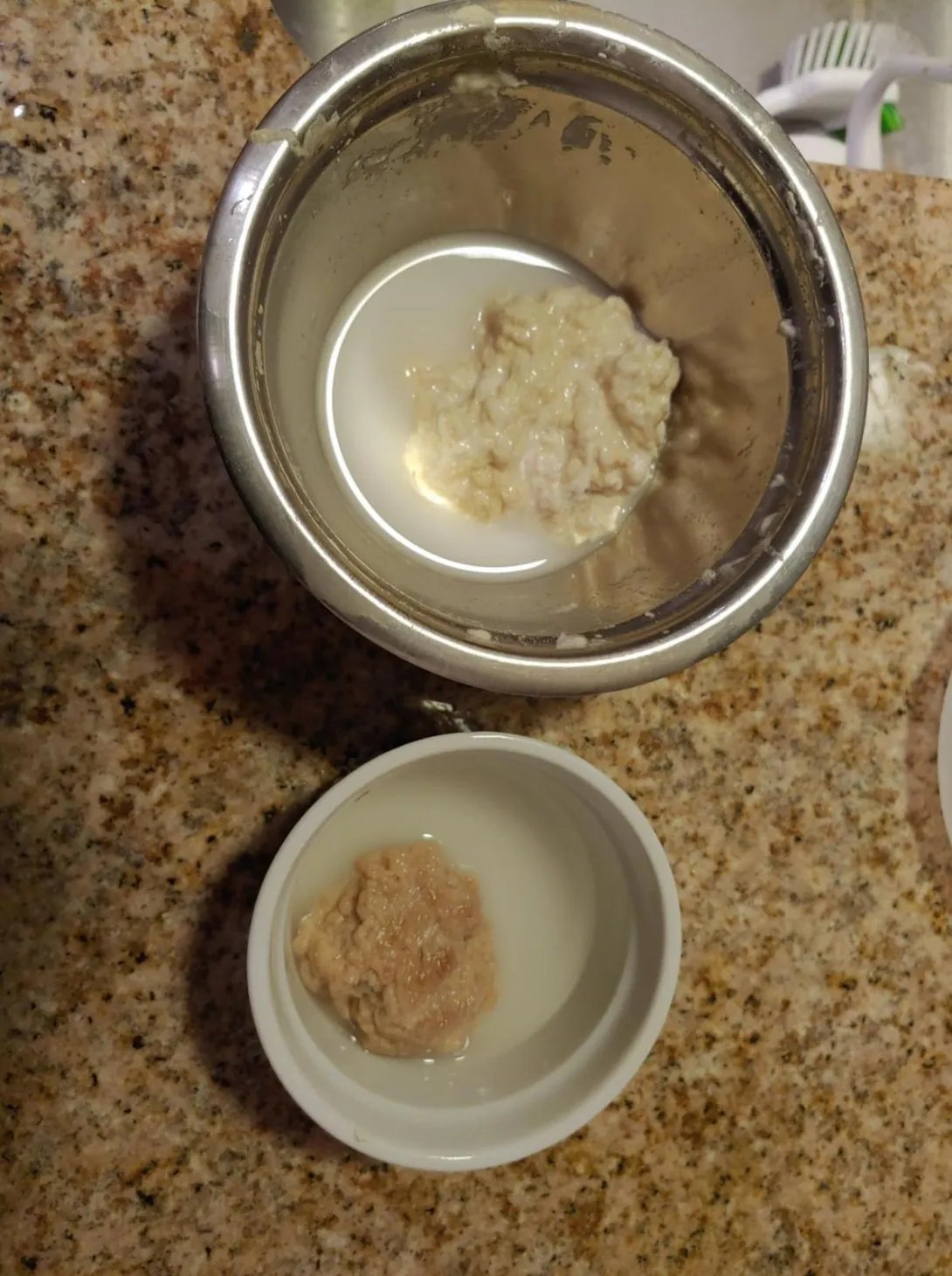Ok, a little background on this crazy-sounding title:
Since the pandemic, I've been hard pressed to find local wheat berries. The hard spring red that I've been ordering have been under-performing gluten-wise for bread (more like a 10% rather than a 13% protein content). Rather than search for a new supplier or buy vital wheat gluten like a normal person, I've taken the 'mad scientist' route, as Peter Reinhart might call it.
In addition to my regular pre doughs, a soaker + a biga (commercially yeasted because my new rental seems to be filled with bad guys so that keeping a starter -- and much of my garden -- healthy is a bit more work than usual) I've gotten into the habit of making a washed dough from white flour.
The idea is:
- Mix a small white flour dough (white flour weight about 20% of my total whole wheat weight)
- Autolyze about 10 minutes (water content just enough to form a dough)
- Knead 2-3 minutes with a spoon
- Pop it into a mason jar with a mesh (or cheese cloth) lid
- Let warm water run over it until it comes out clean
- Finish with cool water, pop it in the fridge
What's left over looks like a snot ball, about 20% the size of the original mass, and should be a high-hydration dough that is mostly gluten. I pop this in with my (hydration-adjusted) predoughs when I'm mixing the next day. About 70% of the time I find that this significantly improves the dough elasticity. The other 30% of the time, the gluten seems to dissolve and disappear with no effect.
This is a fairly new practice to me, so I haven't controlled for all the variables. I'm wondering if anyone else has experimented down this route? I'm guessing that my 30% failure comes from my predoughs and not the gluten ball
I'm curious about how treating the fresh gluten ball prior to addition might affect the final loaf, and will probably experiment over the holidays a bit. Some ideas I might investigate are:
- Kneading alone prior to combining
- Salt/acid/heat treatment
- Adding mixers into the gluten to trap flavor (how it is used in some Chinese soups)
- Adding it to the biga/soaker straight away
- combining it with a non-glutenous flour to make hybrid breads (specifically interested in a masa corn bread which usually has a watered down taste in the 50/50 flour version)
- Some kind of fermentation (not necessarily yeast)? Maybe cool flavors
I can't find any info online about this so I figured I'd post here to see if anyone had thoughts :)
Commencing an experiment where I soak the gluten in chicken broth concentrate for tomorrow's bake :). I'll write back if this results in flavor preservation.
So it sounds like you are isolating the "vital wheat gluten" from the flour and using it to supplement the protein content of the dough you add it to. Fascinating experiment. Keep posting!
I totally agree with this. Something I can't get over is the texture difference between this "fresh gluten" and the packaged stuff after rehydration. The "fresh" version is bleach white, silky smooth and stretches like a good mozzarella. I just started a frankenstein dough where I combined 1/4 cup of this with enough plain masa to form a dough and so far the results are incredible, and maybe better than a plain flour dough (could it be that corn is rich in glutelin?). I've tried this with the powder gluten before and it was a gummy gross loaf. After it rises I'm going to bake it up and see what the crumb of this starch replaced bread looks like.
Monks in Asia, who are strict vegetarians, have been doing it for centuries as a meat replacement. If you go to a large Asian market, if there is one in your area, they sell cans of flavored gluten to toss into your stir fry. One year I even made a mock Turkey for a vegan Thanksgiving the same way. It is also called seitan. https://www.thespruceeats.com/what-is-seitan-3376819
-Brad
What does the inside look like?
Under-proofed + undercooked for sure, but there were some holes, a nice crust and it wasn't gummy like normal masa bread. I think with some tinkering this could be a decent loaf
Sorry for the pic, I was hungry :)
Will be trying this again soon with a longer proof and bake
Here is a comparison between rehydrated gluten (bob's) and fresh gluten. The rehydrated gluten feels a little like xanthan gum -- very tough, chewy and gel like with a rough texture. The fresh gluten feels like hot mozzarella curd, is incredibly stretchy, pliable, and silky smooth. I think something happens to the gluten when you dry it -- it folds itself up too tightly or gets damaged and can't return to its original extensibility. I'm keeping my fresh gluten under water in the fridge (like a mozzarella ball) until my next masa bake
Image
